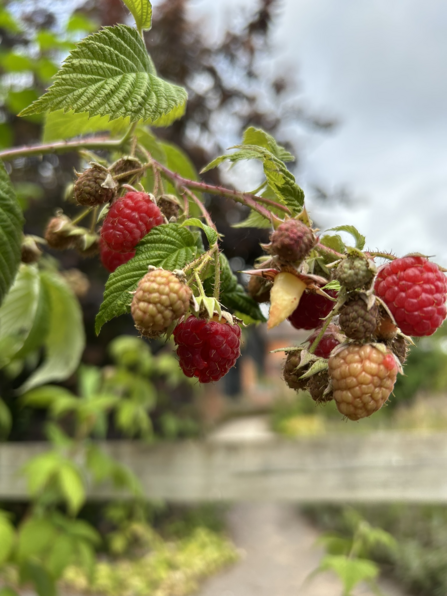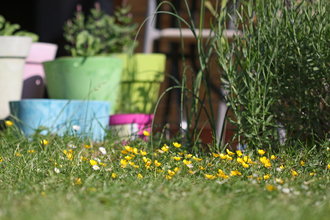As a few of my recent blogs have covered wildlife gardening in different weather conditions, I was inspired by the work that the garden volunteers have been doing here at Lower Smite Farm in the wildlife garden. Having spoken to them, I'd like to share some of the fantastic ideas that are being used to make the most out of a relatively small space for wildlife.
Making a wildlife friendly garden

One great feature of the garden is the long row of raspberries, which as I write this is surrounded by butterflies. Planting a row of raspberries is a good idea if you have a narrow, linear space that gets lots of sun, as they don’t need much space and don’t grow very tall.
The gardeners have also experimented with creating a hibernaculum. This is an underground shelter that provides a cool, damp habitat for amphibians and reptiles to shelter. Building one next to a log pile is a great way to encourage animals to use it. During my visit the inside of the shelter was 19°C, while on a warm day it could be at least 25°C.
Typically, letting a lawn grow would be great for insects by encouraging wildflowers to grow but here at Smite there is a section of grass that is cut to a specific height (low) in order to encourage and protect ground-nesting bees. This allows the grass to warm up in spring and increases the amount of bare ground to make it easier for the bees to burrow.
A key factor to consider when creating a vibrant wildlife garden is soil health. Here, the gardeners work to make sure there is no bare ground. For example, during the winter when the vegetables have been harvested, the raised beds are often left with leaves on top. Not only does this suppress weeds and reduce the amount of moisture that evaporates from the soil but it also provides added nutrients as the leaves decay during the winter, ready for next season's harvest. To add to this, there are large compost containers, including food waste from the office kitchen, so all the soil used is from the garden without needing to buy compost. All the gravel and sandstone walkways have been repurposed from elsewhere and the gardeners propagate their own plants from collecting seed heads every year. A variety of vegetables are grown, mainly for educational purposes for school visits to help children understand where their food comes from.
Drought tolerance and water conservation are important factors to consider in our green spaces at the moment and the volunteers working on the wildlife garden have been improving gardening with this in mind. As the garden is still looking beautifully lush, full of green leaves and buzzing insects, it may be surprising to hear that only the plants in containers are watered. The plants in the ground adapt through the growth of deep roots to access the water stored deep in the soil. With the ‘right plant, right place’ philosophy, the garden has managed to sustain a rich diversity of plants with minimal maintenance. However, it is not all perfect. Rabbits are known to nibble the vegetables from time to time; but that means the garden is working for wildlife, right?
Hopefully these ideas have given you some inspiration to help improve your own garden for wildlife! Please feel welcome to come and visit our Lower Smite Farm wildlife garden during weekday office hours.




